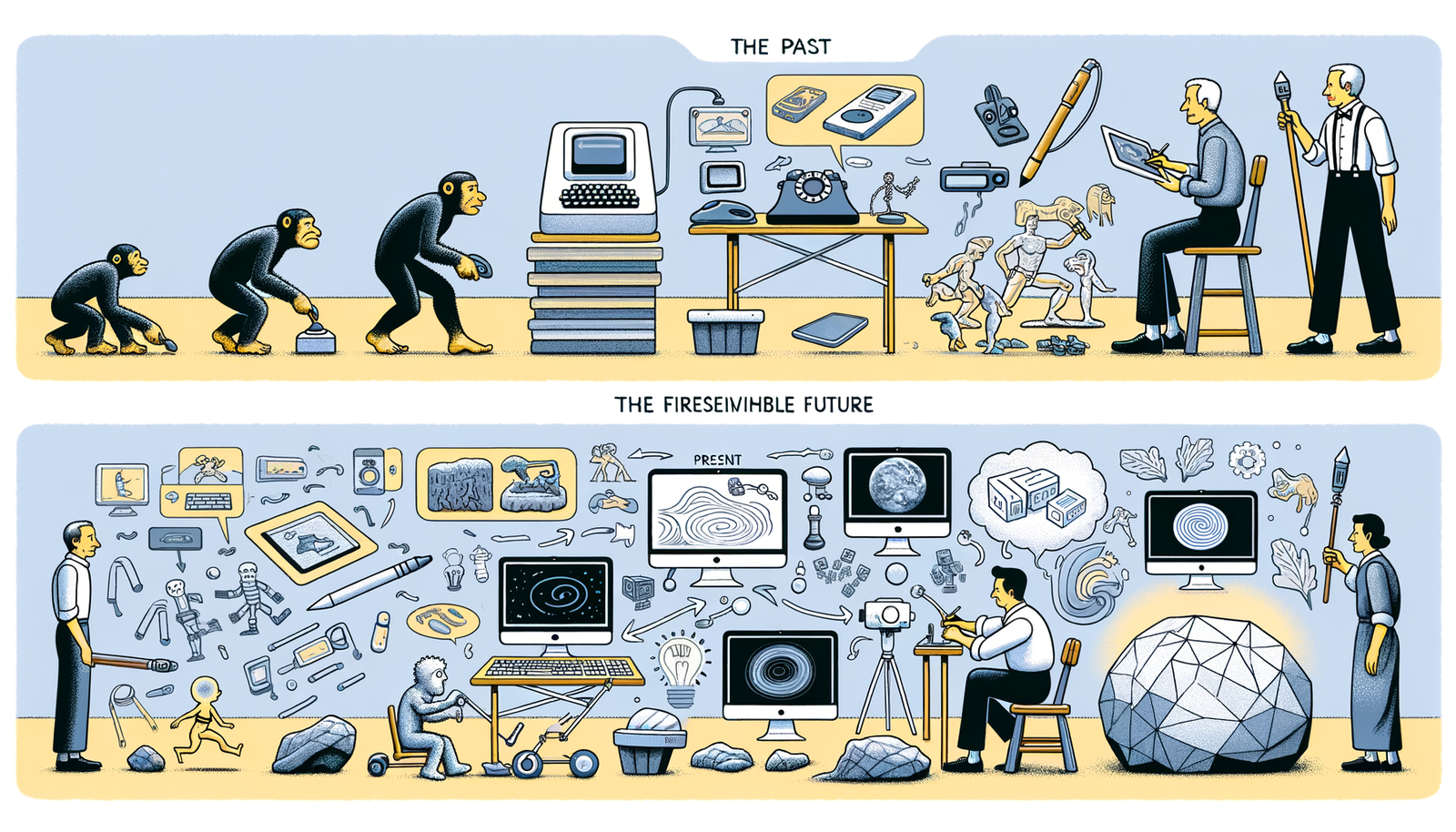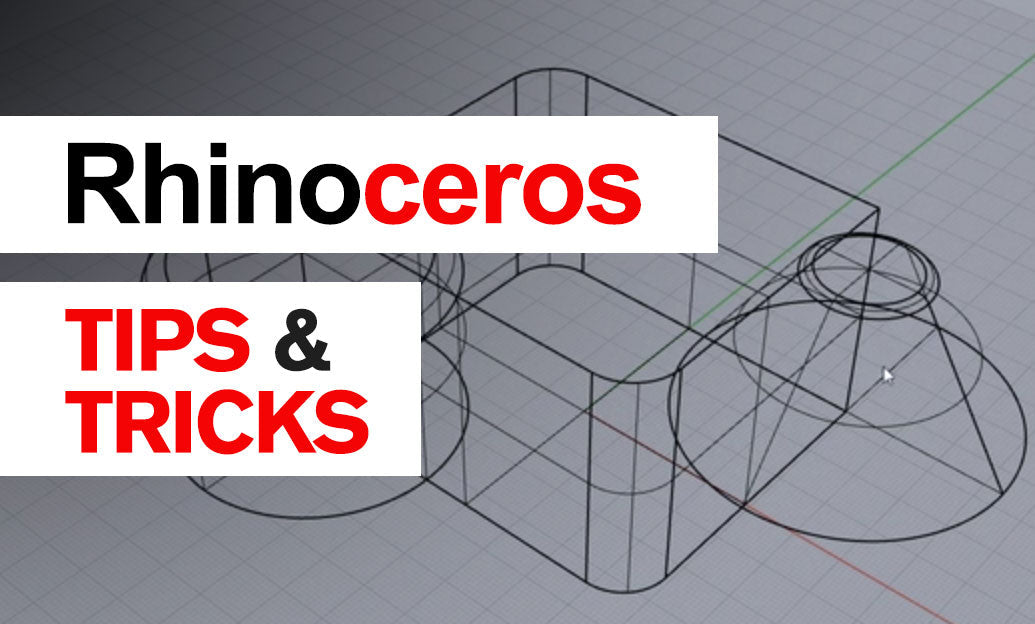Your Cart is Empty
Customer Testimonials
-
"Great customer service. The folks at Novedge were super helpful in navigating a somewhat complicated order including software upgrades and serial numbers in various stages of inactivity. They were friendly and helpful throughout the process.."
Ruben Ruckmark
"Quick & very helpful. We have been using Novedge for years and are very happy with their quick service when we need to make a purchase and excellent support resolving any issues."
Will Woodson
"Scott is the best. He reminds me about subscriptions dates, guides me in the correct direction for updates. He always responds promptly to me. He is literally the reason I continue to work with Novedge and will do so in the future."
Edward Mchugh
"Calvin Lok is “the man”. After my purchase of Sketchup 2021, he called me and provided step-by-step instructions to ease me through difficulties I was having with the setup of my new software."
Mike Borzage
Design Software History: Evolution of Digital Sculpting Tools: From Early Beginnings to Future Innovations
August 14, 2024 6 min read


Introduction to Digital Sculpting Tools
Overview of Digital Sculpting
Digital sculpting tools have revolutionized the design industry, offering designers the ability to create highly detailed and intricate models with ease. These tools mimic the traditional sculpting processes but provide enhanced capabilities and flexibility through digital interfaces. **Digital sculpting** is the process of manipulating a digital object, which can be a 3D model, to achieve the desired shape and texture. This approach has significantly influenced various sectors, including entertainment, product design, and medicine.
When comparing digital sculpting to traditional techniques, several advantages stand out. Traditional sculpting relies on physical materials like clay, stone, or metal, and requires manual tools such as chisels, knives, and hammers. In contrast, digital sculpting allows artists to work with virtual materials using software and hardware such as styluses and tablets. The digital medium offers unlimited undo capabilities, easy replication, and the ability to work in a non-destructive manner.
Early Beginnings
The shift from traditional sculpture to digital mediums began in the late 20th century, driven by advancements in computing power and graphics technology. Early digital sculpting tools laid the foundation for modern software, enabling artists to explore new creative possibilities. **FreeForm** and **ZBrush** were among the pioneering software in this field.
**FreeForm**, developed by SensAble Technologies in the 1990s, was one of the first tools to offer a comprehensive digital sculpting experience. It provided haptic feedback, allowing users to feel the virtual clay, mimicking the sensation of real sculpting. This innovation was groundbreaking and paved the way for more intuitive and responsive digital sculpting tools.
In 1999, **Pixologic** introduced **ZBrush**, a software that would become synonymous with digital sculpting. ZBrush brought a unique approach to modeling, using a combination of 2.5D and 3D techniques. This allowed artists to create highly detailed models with millions of polygons, far surpassing the capabilities of traditional sculpting.
Technological Foundations and Key Players
Core Technologies
At the heart of digital sculpting are several core technologies that enable the creation and manipulation of complex models. Two primary modeling paradigms are voxel and polygon modeling. **Voxel modeling** uses volumetric pixels, or voxels, to represent the 3D space, while **polygon modeling** relies on interconnected vertices, edges, and faces to form the model's surface.
Mathematical models play a crucial role in digital sculpting, providing the underlying frameworks for manipulating shapes and surfaces. Some of the fundamental mathematical models include:
- **Bézier Curves**: These are parametric curves used in computer graphics and related fields. They allow for smooth and scalable shapes, which are essential for detailed sculpting.
- **B-splines**: A generalization of Bézier curves, B-splines offer more flexibility and control over the shape, making them ideal for complex modeling tasks.
- **NURBS (Non-Uniform Rational B-Splines)**: These are mathematical representations that provide great precision and flexibility, allowing the creation of intricate and smooth surfaces.
Pioneering Companies and Individuals
The development of digital sculpting tools has been driven by key companies and individuals who have made significant contributions to the field. **Pixologic**, the company behind ZBrush, has been at the forefront of digital sculpting innovation. Founded by Ofer Alon and Jack Rimokh, Pixologic revolutionized the industry with ZBrush's unique approach to modeling and its ability to handle extremely detailed meshes.
Tomas Pettersson, the creator of **Sculptris**, made a notable impact with his intuitive and accessible sculpting software. Sculptris, introduced in 2009, offered a simplified and user-friendly interface, making digital sculpting more approachable for beginners. Sculptris was later acquired by Pixologic, further enhancing the ZBrush ecosystem.
Another major player in the digital sculpting landscape is **Autodesk**, a company well-known for its suite of design and modeling tools. Autodesk's **Mudbox**, originally developed by Skymatter and acquired by Autodesk in 2007, provided a robust platform for high-resolution digital sculpting and texture painting. Mudbox's integration with other Autodesk products, such as Maya and 3ds Max, made it a valuable tool in the professional artist's toolkit.
Evolution and Impact on Various Industries
Advancements in Software
Over the years, digital sculpting software has seen significant advancements, continually pushing the boundaries of what is possible. Updates and new features have been introduced, enhancing the capabilities and user experience of these tools.
One of the key advancements in digital sculpting software is the integration with other design tools and software ecosystems. For example, ZBrush introduced features like ZRemesher, which automatically optimizes the mesh topology, and GoZ, which facilitates seamless integration with other 3D applications such as Maya, 3ds Max, and Cinema 4D. These integrations allow artists to streamline their workflows and leverage the strengths of multiple software packages.
Industry Applications
Digital sculpting has had a profound impact on various industries, transforming the way design and creation are approached. Some of the most notable applications include:
- **Entertainment**: In the film, animation, and gaming industries, digital sculpting is used extensively for character design, special effects, and environment creation. The ability to create highly detailed and lifelike models has elevated the quality of visual content, making it more immersive and engaging.
- **Product Design**: Digital sculpting tools are invaluable in the prototyping and conceptual modeling stages of product design. Designers can quickly iterate on ideas, visualize concepts in 3D, and make precise adjustments before moving to physical production.
- **Medical Field**: In medicine, digital sculpting is used to create custom prosthetics, anatomical models, and surgical guides. The precision and customization capabilities of digital tools enable the creation of tailored solutions that improve patient outcomes and streamline medical procedures.
Future Directions and Innovations
Current Trends
The field of digital sculpting continues to evolve, with several current trends shaping its future. **Real-time rendering** and advancements in **GPU technology** have made it possible to visualize complex models with immediate feedback, enhancing the creative process. This allows artists to see changes in real-time, making the iterative process more fluid and dynamic.
Another significant trend is the integration of **AI and machine learning** into digital sculpting tools. These technologies are being used to develop more intuitive and intelligent tools that can assist artists in tasks such as automatic retopology, texture mapping, and even generating initial sculpting forms based on user input. This can significantly reduce the time and effort required for complex tasks, allowing artists to focus more on creativity and less on technical details.
Future Possibilities
The future of digital sculpting holds exciting possibilities, driven by ongoing technological advancements and innovative approaches. **Enhanced VR and AR experiences** for sculpting are on the horizon, offering immersive environments where artists can interact with their digital creations in a more natural and intuitive manner. VR and AR technologies can provide a sense of scale and presence that traditional screens cannot, opening up new creative possibilities.
**Cloud computing and collaborative platforms** are also set to play a significant role in the future of digital sculpting. These technologies enable artists to work on shared projects, access powerful computing resources, and collaborate in real-time, regardless of geographic location. This can lead to more efficient workflows and foster creativity through collaboration.
Another exciting development is the potential for **haptic feedback devices** that provide tactile sensations during the sculpting process. These devices can simulate the feeling of working with physical materials, making the digital sculpting experience more immersive and engaging. The integration of haptic feedback can also improve precision and control, allowing artists to create more detailed and refined models.
Conclusion
The journey of digital sculpting tools has been marked by remarkable advancements, driven by the efforts of pioneering companies and individuals. From the early beginnings of FreeForm and ZBrush to the sophisticated tools available today, digital sculpting has transformed the design landscape across various fields. The integration of core technologies, such as voxel and polygon modeling, and mathematical models like Bézier curves, B-splines, and NURBS, has enabled the creation of intricate and detailed models.
As digital sculpting continues to evolve, current trends in real-time rendering, AI integration, and advancements in GPU technology are shaping its future. The potential for enhanced VR and AR experiences, cloud computing, collaborative platforms, and haptic feedback devices holds promise for even more transformative developments. Digital sculpting tools have undeniably had a profound impact on design practices, enabling artists and designers to push the boundaries of creativity and innovation.
Also in Design News

Rhino 3D Tip: Rhino Material Optimization: Nesting, Lightweighting, and Cut-Length Reduction
December 31, 2025 2 min read
Read More
Design Software History: Constraint Solving in CAD: From Sketchpad to Modern Parametric Engines
December 31, 2025 12 min read
Read More
Intent-Aware Scan-to-BRep: Integrating LiDAR Point Clouds into Solid Modeling Pipelines
December 31, 2025 12 min read
Read MoreSubscribe
Sign up to get the latest on sales, new releases and more …


